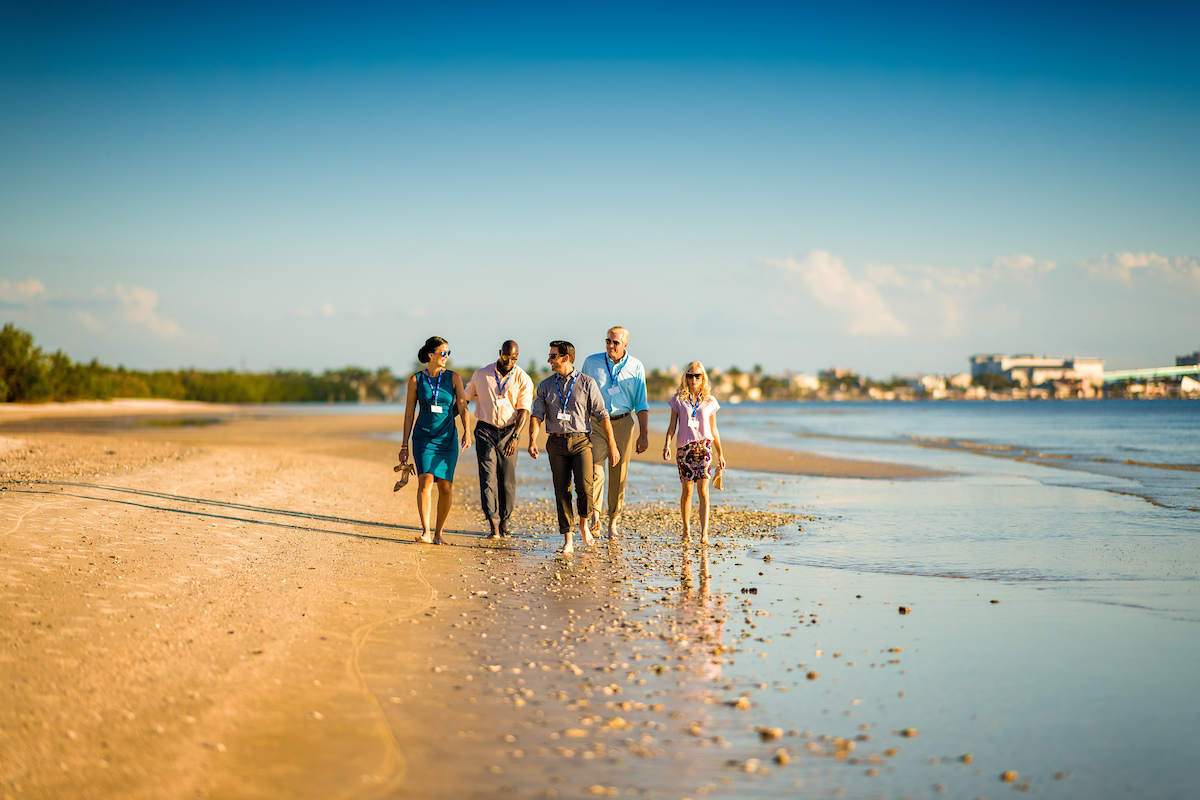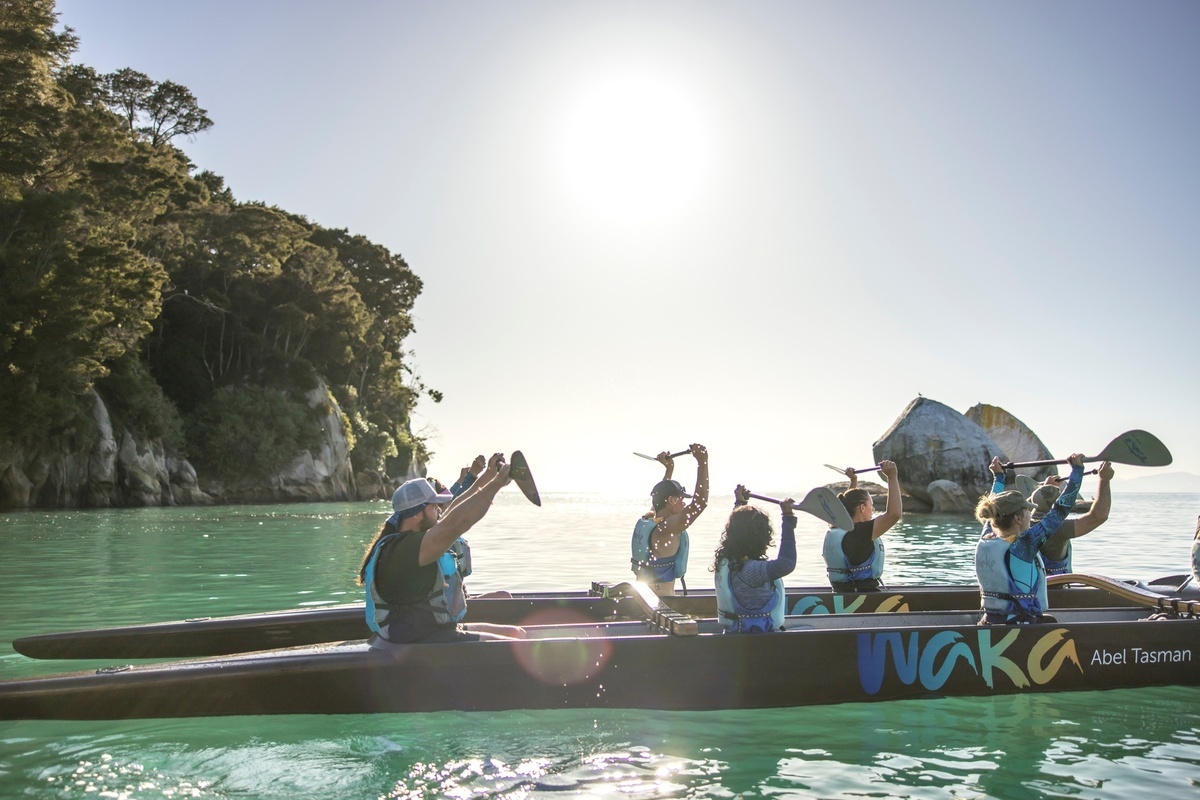Skift Take
Destination organizations are constantly evolving. Destinations International is helping them thrive by helping them keep track of new trends and develop strategies to address challenges and opportunities.
Like many in the industry, Gabriel Seder’s career followed an indirect path. He started out in tourism and went on to work internationally on conservation initiatives and economic development. This allowed him to work in rising destinations and develop destination marketing organizations (DMOs). About three and a half years ago, Jack Johnson, chief advocacy officer at Destinations International (DI), recruited Seder. He began this role just two weeks before the Covid pandemic and has been in remote work ever since.
This article is based on the latest episode of the Skift Meetings Podcast featuring Gabriel Seder, vice president, global development at Destinations International. Listen to the full episode here.
Subscribe to the Skift Meetings Podcast: Apple Podcasts | Spotify | Overcast | Pocket Casts | Google Podcasts | Amazon | RSS
Seder worked on a variety of programs with the common thread of tourism. His last project before joining DI was a program aimed at creating tourism assets in protected areas in Liberia – a destination with a limited tourism infrastructure. He also had the opportunity to work on projects in Jamaica, looking at how to involve non-traditional actors in the visitor economy and how to expand the value chain to include disadvantaged populations. This was gratifying yet challenging work.
An International Outlook
Destinations International (DI) is a trade association that represents destinations around the world. It advocates on behalf of destination organizations. It provides professional development resources for destination sales and marketing professionals and nurtures a community of destination professionals around the world.
In his role as vice president of Global Development at DI, Seder is focused on the international side of the business. He thinks about strategies for global growth in terms of membership, partnerships, and the overall value proposition. He constantly asks questions like:
- How do we build a more global and inclusive audience and community?
- How are we ensuring that the content that we produce speaks to global audiences?
- How do we provide tools and resources that cross borders and develop a value proposition for a global community of destination professionals?
The History of Destinations International
DI was founded in 1915 as the Association of Convention Secretaries, later becoming the International Association of Convention Bureaus. It’s been around for over 100 years and has held its annual convention more than 100 times. Its latest identity change transformed it from Destination Marketing Association International (DMAI) to DI while maintaining the same core message. Initially, it focussed on North America, especially the U.S. Midwest region, but in the last decade, it has become a global organization. Currently, it has around 700 destination members, mostly from North America, with 500 from the U.S. and a strong Canadian base, complemented by an increasing international membership. DI also works closely with partners such as media vendors and marketing agencies, as well as business members. Ultimately, DI is a membership association for destination organizations.
Going Beyond Marketing
Destination Organizations often debate what they are at their core: marketing or management. To simplify the conversation, Destinations International rebranded eight years ago and dropped the marketing/management “M”. It refers to all organizations as “Destination Organizations” recognizing that all involve elements of both marketing and management.
Seder believes that the scope of destination organizations has long expanded beyond merely sales and marketing. Management is also a part of their mandate, and research suggests that there should be a big focus on the supply side, including the product within the destination. It’s a growing priority for destination organizations and one that members prioritize and demand that DI focuses on.
Advocating for the Industry
For Seder, it is clear that destination organizations should advocate for the industry and be the entity that speaks on its behalf. They should be active in elevating and communicating the industry’s impact on the community and be present in forums where policy decisions are made. Destination organizations should also reflect community needs and expectations in the products they market. Workers should be attracted to, retained, and upskilled in the destination. Finally, the destination organization should be involved in infrastructure investment and access, connectivity, and inclusivity decisions.
Destination Research
One of the projects Seder works on is the Destination Next Future Study Report, which is released every two years. DI collaborates with MMGY NextFactor, whose former employees Paul Ouimet and Greg Oates (formerly of Skift) greatly contribute to the study. The study is based on a survey of destination professionals worldwide, with more than 800 respondents from over 60 countries. DI uses data to identify and rank macro trends affecting destinations, as well as the strategies they use to address the trends. Trusted panels identify the trends, then surveys rank and quantify them.
AI Trend But Not a Strategy, Yet
In the latest survey, AI was identified as the top trend but featured much lower on the strategy rank. Seder believes this is due to bias, which he explains can always be present in any survey. This survey occurred at the same time as the release of ChatGPT4 and other generative AI tools, making headlines. Although everyone is aware of AI and its potential, there are few strategies in place to utilize it.
The Desire for Authentic Experiences
Customers are seeking a unique and authentic experience. This demand has been constant over the past several surveys. Seder encourages destination marketers to speak to the core assets of their destination to satisfy this demand for authenticity. To successfully market physical assets, they must identify the core identity and culture of the destination, and reflect it in a way that speaks to the travelers.
How DI Helps Members Stay Afloat
Protecting revenue is a major concern and key strategy for destination organizations across the world. Destination organizations must work to communicate their value in order to ensure funding. This includes not only the economic impact, but also defending their brand, attracting talent, and highlighting the legacy of their meetings and events. Building relationships with stakeholders such as policymakers, the industry, and the local community is essential for effective advocacy, which these organizations should strive to strengthen.
Diagnostic Tool
The Destination Next Future Study (DNext) is part of a two-piece resource: the research study and an assessment tool. The assessment tool evaluates the strengths and opportunities of the destination (variables such as the destination’s product) and also the destination organization (variables such as management and marketing). DI updates the assessment tool every two years with data from the study, and it is available to any destination for participation. Workshops are available to collaborate and analyze the data with destination organizations.
Addressing the Big Industry Challenges
Seder is a strong proponent of destination organizations advocating for travel and tourism. They should be experts at communicating the positive role that travel and tourism play for the destination. Sustainability and over-tourism are big challenges facing destinations. There is no denying these are big challenges, but the role of the destination organization is to advocate and leverage the industry to mitigate negative and maximize positive impacts. Being that they do not own assets or manage them, destination organizations can still have a seat at the table and set the agenda.
Advice to younger Generations
Travel and tourism often have a perception of only offering seasonal work with low pay. However, Seder believes this is no longer the case. Regardless, this perception is there, and it can make it hard to attract and retain talent. In fact, recently, Seder discovered that when looking through DI’s alumni, a large percentage no longer work in the industry. This suggests the industry is losing the best and brightest. To help solve this, DI works closely with its members to ensure young people have a seat at the table. DI gives young professionals to build their skills and be heard in the industry. DI’s 30 under 30 program and PCMA’s 20 in their twenties are two initiatives raising up diverse, enthusiastic young leaders.
This episode was produced in partnership with Destination International.





